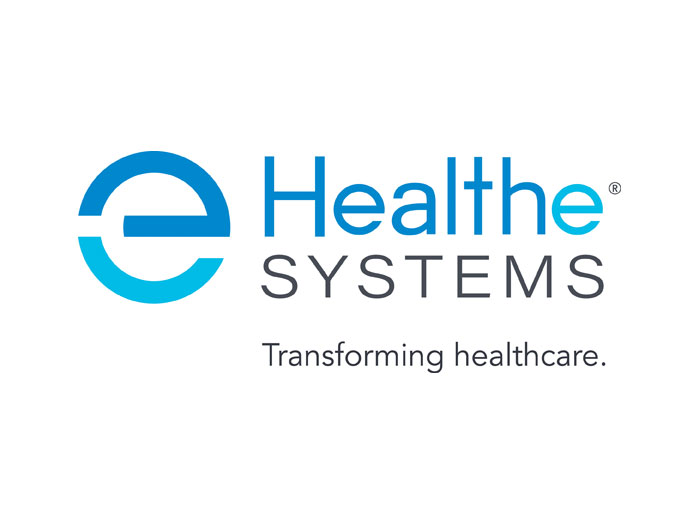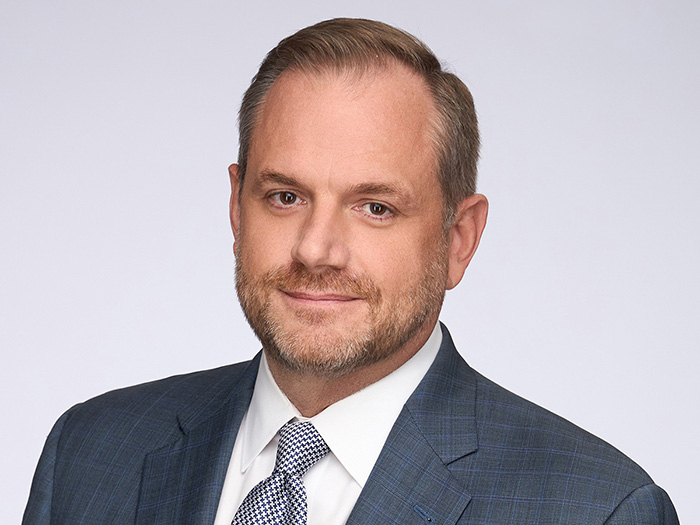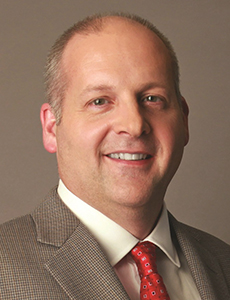Joint Industry Forum Preview: Crawford & Company’s Rohit Verma

In advance of the Insurance Information Institutes’ Joint Industry Forum, which is taking place in Chicago on June 18, Dan Reynolds, the editor in chief of Risk & Insurance, spoke to Rohit Verma, the President and CEO of Crawford & Company. Mr. Verma will be participating in a panel discussion at the JIF titled The Executive Playbook: Navigating Uncertainty. Unlocking Opportunity.
Appearing alongside Mr. Verma will be J. Powell Brown, the President and CEO of Brown & Brown, John Marchioni, the Chairman, President and CEO of Selective Insurance and Susan Rivera, the CEO of Tokio Marine HCC. The panel will be moderated by Contessa Brewer, a correspondent with CNBC. Registration for the event is still open.
What follows is a transcript of the discussion between Mr. Reynolds and Mr. Verma, edited for length and clarity.
Risk & Insurance: Thanks for your time Rohit. What’s top of mind for you as you prepare to speak in Chicago?
Rohit Verma: I would put forth four headlines. The first headline I would call the Affordability Conundrum. The second is the Technology Expectations Gap. The third is the Rise of the Billboard Army. And the fourth, I would say, is the Fading Talent Appeal.
Let’s start with the first one, which is the Affordability Conundrum. The Affordability Conundrum is that the trust level with insurance carriers, particularly – not so much with the brokers, but with insurance carriers, which is as low as I can recall in my experience. And it is largely related to the pricing adjustments that they have had to make.
We’ve all heard about what’s happened in Florida. We’ve all heard about what’s happened in California. We’ve heard of some very public exits by large carriers. Those have been in the news. But if you take a microscopic view and look at many other states and counties, you will find that insurance premiums have gone up. I’m sure you’ve experienced that, and I’ve experienced that here in Georgia.
While the headlines may be all about Florida and California, I think this is a problem that exists everywhere. And the reason I call it the Affordability Conundrum is because, contrary to popular belief, insurance carriers do not raise prices because they want to increase their profits. Rising premiums are driven by the increase in severity and frequency of what’s happening around us.
From a math perspective, insurance is based on the calculation that if you insure and collect premiums on a hundred homes, you expect that one or two of those homes will have damage, and you then you will pay for that damage and everybody will be fine.
What’s happening today is – whether it’s the type of construction, the cost of construction, the cost of materials, or the severity of storms – of those hundred homes, now 20 or 30 out of them are experiencing damage due to severe weather. This means that the claims that are being paid are more costly compared to the claims that were paid in the past. The result is that insurers need to either raise prices or increase deductibles or they risk losing money and going out of business.
It’s a conundrum because on one hand, insurers don’t want to raise prices because they don’t want to lose customers, which creates that mistrust that I mentioned. But I don’t think they have any option because if the cost of the claims keeps going up, at some point, you have to increase the premiums. So I think it’s truly an Affordability Conundrum, and getting through it is going to be a challenge.
The second is the Technology Expectations Gap. This is is driven by the fact that all of us are very used to smartphones. We bank on them. We order food on them. We do everything on these phones.
While many of the carriers have advanced a lot from a tech perspective, the expectations that we as consumers have from the insurance carriers that we work with are significantly higher. We’ve been spoiled by the DoorDashes, the Ubers, and the Airbnbs of the world.
Insurance operates in a highly regulated environment and across a wide demographic. My parents have a completely different perspective and buying pattern than my daughter. There’s an expectation around tech which has been altered by the experiences that we have in other aspects of our life, which are not as regulated and not as complicated as insurance. I think that’s a gap that exists. In the insurance industry, we have to figure out how to close that expectations gap.
Headline number three, which dovetails with the Affordability Conundrum, is what I call The Rise of the Billboard Army. I was driving yesterday from the Hartsfield Airport in Atlanta back to my home, and I travel on Interstate 85. Every other billboard you pass is a plaintiffs’ lawyer saying they can get you more money for your injury than anybody else.
But we’re seeing disproportionate awards by juries based on the arguments that are made by the plaintiffs’ lawyer for a $10,000,000 jury verdict, saying that it’s less than one percent of the insurance company’s revenue. The problem is that if the insurance company is expected to pay claims based on the company revenue as opposed to the facts around the injury or the merits of what’s happened, it’s going to be pretty difficult for them to afford those kind of payouts.
At the end of the day, insurance is a contract. It’s a promise. We absolutely want to make sure that we, in claims or as an insurance carrier, deliver on the day that it matters the most to someone. We absolutely realize that when we work with people, it’s probably one of the worst days of their life. So making sure that we’re paying not a dollar less than what is deserved and not a dollar more than what is deserved is how we can be fair to the person who’s being paid and also to the other policyholders.
Because ultimately, if you end up paying a dollar more to the person who deserves a certain figure, then that dollar has to be recouped from the other policyholders. I’m not suggesting that the insurance company should make more money or less money. I’m just saying everything being equal. Thankfully, there are reforms happening in states like Florida, Georgia, Louisiana, and Texas, which have become particularly problematic states.
R&I: No doubt about it. And what’s your fourth headline?
RV: The fourth one I call The Fading Talent Appeal.
Today, when I talk to young people and say, “Insurance is a stable career, more resilient to economic shifts than any other industry that’s out there. It is an industry that’s not going to go away and isn’t based on some fad.” They would still rather go work for a company in Silicon Valley or in a more popular industry.
I think the view of career opportunities is very different than what it was for you and me. That is a challenge that we have to take a hard look at.
The other piece of this is, if you look at what’s happening in the Western world and what’s happening in the U.S., our population is declining. The fertility rate in the U.S. is barely keeping up. The fertility rate has to be 2.1 per female in any country for the population to be stable. The U.S. is right at 2.1. Canada and Europe are negative, well below 2.1. If you look at what’s happening in Italy and Germany, in the next two to three years, 60 to 70% of the population will be eligible to retire. The only place where you’re going to see an increase in population is Asia and Africa. If you look at where the capital providers are today, they’re all in the Western world or the U.S. We’re looking at a gap between where the capital providers are and where the risk is going to be. Because if you look at where are the largest cities going to be, they’re going to be in Asia.
The number of billion-dollar buildings that are being built in the Middle East and Asia is a lot higher than the number of billion dollar buildings that are being built in Europe and the U.S. We’re going to have this gap where risk is going to be in one place, talent is going to be in one place and capital is going be at another place.
So how do we start thinking about that? I feel that we have run out of time, frankly, and we’ll have to figure out how we import talent.
As executives in insurance, we’ve got a real challenge to think about. Otherwise, we’ll have all this capital, and we won’t have a place to deploy it, and we won’t have people who can deploy that capital for us.
R&I: Of the four headlines that you just laid out, which are all very interesting, which are you most optimistic that the industry can address, and which are you least optimistic that the industry can address?
RV: I think that the Technology Expectations Gap and the Rise of the Billboard Army are issues that the industry can address. I think that’s us working hand in hand collectively, working with the legislatures, working on technology.
The Affordability Conundrum, I think, is a much bigger and broader issue. We can’t control the weather. We can’t control the climate. Some would argue that if we can reduce greenhouse gas emissions, that will help. I understand that. But it’s not an easy fix. It’s not something that’s going to change tomorrow. We’re not going to be able to impact hurricanes or reduce the number of severe convective storms next year. I think that’s going to be hard for us to address as costs are going up. I do believe the talent gap can be addressed, but it’s not something that the industry can do on its own.
Addressing the Technology Expectations Gap and the Rise of the Billboard Army are things the industry can do on its own. We can band together, and we can work with local legislators, and we can mitigate the billboard army. And I certainly think we can advance technology. But the other two headlines are just out of our control.
Editor’s note: The Insurance Information Institute and Risk & Insurance are both affiliates of The Institutes.










